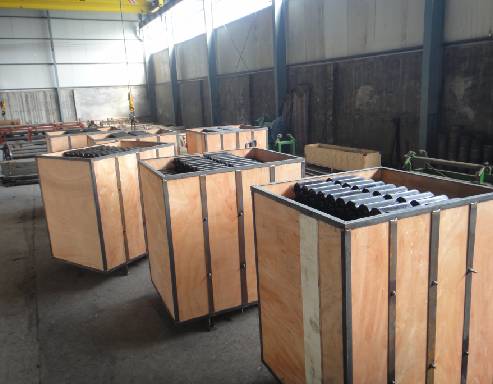 Afrikaans
Afrikaans  Albanian
Albanian  Amharic
Amharic  Arabic
Arabic  Armenian
Armenian  Azerbaijani
Azerbaijani  Basque
Basque  Belarusian
Belarusian  Bengali
Bengali  Bosnian
Bosnian  Bulgarian
Bulgarian  Catalan
Catalan  Cebuano
Cebuano  Corsican
Corsican  Croatian
Croatian  Czech
Czech  Danish
Danish  Dutch
Dutch  English
English  Esperanto
Esperanto  Estonian
Estonian  Finnish
Finnish  French
French  Frisian
Frisian  Galician
Galician  Georgian
Georgian  German
German  Greek
Greek  Gujarati
Gujarati  Haitian Creole
Haitian Creole  hausa
hausa  hawaiian
hawaiian  Hebrew
Hebrew  Hindi
Hindi  Miao
Miao  Hungarian
Hungarian  Icelandic
Icelandic  igbo
igbo  Indonesian
Indonesian  irish
irish  Italian
Italian  Japanese
Japanese  Javanese
Javanese  Kannada
Kannada  kazakh
kazakh  Khmer
Khmer  Rwandese
Rwandese  Korean
Korean  Kurdish
Kurdish  Kyrgyz
Kyrgyz  Lao
Lao  Latin
Latin  Latvian
Latvian  Lithuanian
Lithuanian  Luxembourgish
Luxembourgish  Macedonian
Macedonian  Malgashi
Malgashi  Malay
Malay  Malayalam
Malayalam  Maltese
Maltese  Maori
Maori  Marathi
Marathi  Mongolian
Mongolian  Myanmar
Myanmar  Nepali
Nepali  Norwegian
Norwegian  Norwegian
Norwegian  Occitan
Occitan  Pashto
Pashto  Persian
Persian  Polish
Polish  Portuguese
Portuguese  Punjabi
Punjabi  Romanian
Romanian  Russian
Russian  Samoan
Samoan  Scottish Gaelic
Scottish Gaelic  Serbian
Serbian  Sesotho
Sesotho  Shona
Shona  Sindhi
Sindhi  Sinhala
Sinhala  Slovak
Slovak  Slovenian
Slovenian  Somali
Somali  Spanish
Spanish  Sundanese
Sundanese  Swahili
Swahili  Swedish
Swedish  Tagalog
Tagalog  Tajik
Tajik  Tamil
Tamil  Tatar
Tatar  Telugu
Telugu  Thai
Thai  Turkish
Turkish  Turkmen
Turkmen  Ukrainian
Ukrainian  Urdu
Urdu  Uighur
Uighur  Uzbek
Uzbek  Vietnamese
Vietnamese  Welsh
Welsh  Bantu
Bantu  Yiddish
Yiddish  Yoruba
Yoruba  Zulu
Zulu Understanding Conveyor Rollers and Idlers for Efficient Material Handling Solutions
Understanding Conveyor Rollers and Idlers
In the world of material handling, conveyor systems play a critical role in enhancing productivity and efficiency in various industries, including mining, manufacturing, and logistics. Among the vital components of these systems are conveyor rollers and idlers, which significantly impact the performance and longevity of conveyor belts. This article aims to provide an overview of these essential components, their functions, and their importance in conveyor systems.
What Are Conveyor Rollers?
Conveyor rollers are cylindrical devices that are pivotal in supporting the conveyor belt as it moves materials from one point to another. They are typically mounted on a frame and are designed to rotate freely, which allows the belt to glide smoothly over them. Conveyor rollers can be classified into several types based on their application, including
1. Drive Rollers These rollers are connected to the motor and are responsible for transferring power to move the conveyor belt. 2. Return Rollers Located at the underside of the belt, they guide the belt back to the starting point after materials have been discharged.
3. Troughed Rollers These are shaped in a trough formation, allowing for better containment of materials, especially when dealing with bulk goods.
4. Impact Rollers Positioned at loading zones, these rollers absorb the shock of heavy materials landing on the belt, thereby minimizing belt wear and damage.
5. Guiding Rollers These help in maintaining the alignment of the belt and preventing it from drifting off the desired path.
The Role of Idlers
Idlers are the supportive structures positioned along the conveyor belt. They help keep the tension of the belt intact, ensuring it runs efficiently without sagging or stretching. Idlers are crucial for reducing friction between the belt and the surface it operates on, which in turn decreases wear and tear, ultimately enhancing the lifespan of the conveyor system.
There are several types of idlers, including
1. Carrying Idlers These are placed beneath the loaded section of the conveyor belt to support the weight of the material being transported.
conveyor rollers and idlers

3. Training Idlers Designed to keep the belt aligned, training idlers prevent it from running off track and causing operational disruptions.
4. Impact Idlers Similar to impact rollers, these idlers absorb the shock at the loading areas to protect the belt from damage.
Importance of Quality in Rollers and Idlers
The quality and durability of conveyor rollers and idlers are crucial for the reliable operation of conveyor systems. High-quality materials, such as carbon steel or stainless steel, are used to manufacture these components to withstand heavy loads, harsh operating environments, and potential chemical exposure.
Investing in reliable conveyor rollers and idlers can lead to several benefits, including
- Reduced Downtime Quality components can minimize the frequency of repairs and replacements, leading to less downtime and increased productivity.
- Enhanced Efficiency Efficient rollers and idlers reduce energy consumption by minimizing friction, allowing conveyor systems to operate more smoothly.
- Extended Lifespan Robustly designed rollers and idlers are less likely to fail prematurely, offering better value over time.
Conclusion
Conveyor rollers and idlers may appear to be small components in the larger scheme of material handling systems, but their importance cannot be overstated. They directly influence the efficiency, safety, and operational costs associated with conveyor systems. As industries continue to evolve, the demand for high-quality, durable conveyor components will only increase. Understanding the roles and advantages of conveyor rollers and idlers is essential for anyone involved in the design, operation, or maintenance of these systems. By investing in quality products and proper maintenance practices, businesses can enhance their operational efficiency and ensure the longevity of their conveyor systems.
-
Revolutionizing Conveyor Reliability with Advanced Rubber Lagging PulleysNewsJul.22,2025
-
Powering Precision and Durability with Expert Manufacturers of Conveyor ComponentsNewsJul.22,2025
-
Optimizing Conveyor Systems with Advanced Conveyor AccessoriesNewsJul.22,2025
-
Maximize Conveyor Efficiency with Quality Conveyor Idler PulleysNewsJul.22,2025
-
Future-Proof Your Conveyor System with High-Performance Polyurethane RollerNewsJul.22,2025
-
Driving Efficiency Forward with Quality Idlers and RollersNewsJul.22,2025





























